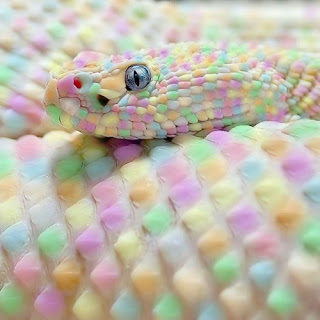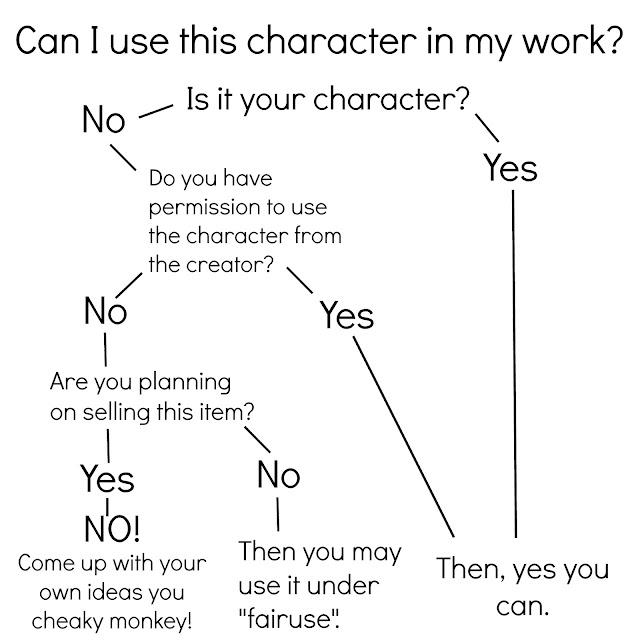
Social media as well as other online selling platforms make it easier than ever to get your products out there. The exposure that pages like Etsy and Ebay can provide has led many creative businesses to move their businesses exclusively online.
But for all its benefits this level of exposure can have its own pitfalls. Copyright and plagiarism is rife in the creative world.
This is the definition from Wikipedia;
"Copyright is a legal right created by the law of a country that grants the creator of an original work exclusive rights for its use and distribution. This is usually only for a limited time."
For your work to be protected under copyright law it must be;
- Original. That is, a product of your own skill, labour or intellectual creation.
And
2. Tangible. It must be in physical existence. You can't copyright and idea you had, even if you are convinced you invented pop tarts in the 60s.
So what does this mean for crafters?
This means that you as the creator or designer have the rights to control how your work is used/distributed/reproduced/published or adapted.
As such, a copyright infringement is "unauthorised" use of the creators work.
Giving credit where credit is due.
EDIT 23/01/17
A huge thanks to Gra Howard for introducing me to "Tin Eye"
Link HERE
Tin Eye is a piece of free online software specifically designed for reverse image searches. Just enter the URL of the page where the image is, then select the image you want to search from the available list.
There is a drop down available and if you select "oldest" then It will take you to the earliest known source of that image and ta da! You have the source!
For example, I searched for ages and thought I found the source of the below Image as the 18/12/2012. Turns out the image was actually uploaded on the 07/02/2008.
Where I thought the image was from;
Here is the actual source image;
You can use the same process to see if your own images are being used without permission.
If you find someone is using your images without permission or proper credit, then you are within your rights to ask them to remove it.
So how do I stop people using my images in the first place?
The best way is to use a watermark like this one;
(image source https://www.etsy.com/uk/shop/WoodsyGetCosy?ref=ss_profile)
These were made using a simple overlay from picmonkey, but you can also use most image editing software to make something similar.
If you add your details like the one on the left, then no one would be able to use the image without directly crediting your work.
What if someone is using a design very similar to mine, but not the same?
If you find an item that bears a "striking resemblance" to you own work then this is called misappropriation. A "striking resemblance" is defined as "the similarity could only have been caused by copying, and not, for example, through "coincidence, independent creation, or a prior common source"
So for example, say you make scrabble frames and you see someone else make a very similar scrabble frame. You can only accuse them of misappropriation if you can prove that the other person has directly copied your work.
Courts have relied on several factors to aid in a striking similarity analysis. Among these are:
- Uniqueness, intricacy, or complexity of the similar sections.
- If the plaintiff's work contains an unexpected or idiosyncratic element that is repeated in the alleged infringing work.
- The appearance of the same errors or mistakes in both works.
- Fictitious entries placed by the plaintiff that appear in the defendant's work. For example, fake names or places are often inserted in factual works like maps or directories to serve as proof of copying in a later infringement case since their appearance in a defendant's work cannot be explained away by innocent causes.
- Obvious or crude attempts to give the appearance of dissimilarity. (source Wikipedia 2017)
The best way of doing this is by showing that you work was created before theirs, and therefore they must have copied your work and not the other way around.
Do this by ensuring that the watermarks that you have put on your image have the date on them. You can also demonstrate this by using the link above to determine where the image first came from, as this will also have a publishing date.
If you cant prove this then sorry, bad luck.
Historical copyright
Copyright doesn't last forever.
| Type of work | How long copyright usually lasts |
|---|---|
| Written, dramatic, musical and artistic work | 70 years after the author’s death |
| Sound and music recording | 70 years from when it’s first published |
| Films | 70 years after the death of the director, screenplay author and composer |
| Broadcasts | 50 years from when it’s first broadcast |
| Layout of published editions of written, dramatic or musical works | 25 years from when it’s first published |
A couple of examples of historical copyright;
Peter Rabbit
In the UK and the US, Copyright law dictates that 70 years after the original creators' death their work becomes part of the "public domain". This would be the case for dear Peter Rabbit were in not for the notoriously aggressive efforts of the publishing "guardian" Frederick Warne & Co.
Warne was made responsible for the guardianship of Potters intellectual property after her death in 1943. In 2013 when the copyright was due to lapse, Warne (who had by this time been bought out by Penguin Books) engaged on a ruthless assertion of copyright and proceeded to seek the rights for everything from Peter Rabbit toilet seats to food products.
Because of this, despite the fact that Beatrix Potter has been dead for over 70 years, Peter Rabbit and all associated imagery, literature and merchandise, is still protected under copyright law.

(property of Penguin Books PLC)
Peter Pan
This is a tale of 2 half's.
The first is the STORY written by J.M. Barrie in 1911 and PLAY written in 1928.
All rights were bequeathed to the Great Ormond Street Hospital in 1929 and have provided the hospital with revenues ever since. When the copyright first expired in 1987 (50 years after Barries death, as was the law at the time) UK government's Copyright, Designs and Patents Act of 1988 granted the hospital a perpetual right to collect royalties.
The second is the FILM released by Walt Disney Studios in 1953.
Walt Disney Corporation were licensed exclusive animation rights by Great Ormond Street Hospital in 1939. Disney subsequently own all imagery and merchandising rights as these were not around in 1939. As such all images from the 1953 film are still the property of Disney.
So, to summarise, if you are wondering if you can make an item with a character on it.......
Some things I have heard people say.....
So, to summarise, if you are wondering if you can make an item with a character on it.......
Some things I have heard people say.....
"But I'm only using a quote not an image"
Yea, It's still a no.
"But I've drawn it myself" or "its only inspired by *insert character*"
Does it still look like the character?
"Yes"
THEN NO!
"But I'm not selling it for a profit"
What? No! Just get out.
So there you have it. This is by no means a concise record of every piece of copyright law that you may come across, but I hope that it helps to put some things in perspective.
NOTE! This article refers to reproduced images only! Licenced images that you have purchased on fabric and paper do not fall under the same rules as I have outlined above. For more information on licenced fabrics, click the link here; https://todaywecraft.com/blogs/business/branded-fabrics-the-great-copyright-debate
Remember, if in doubt, leave it out.





